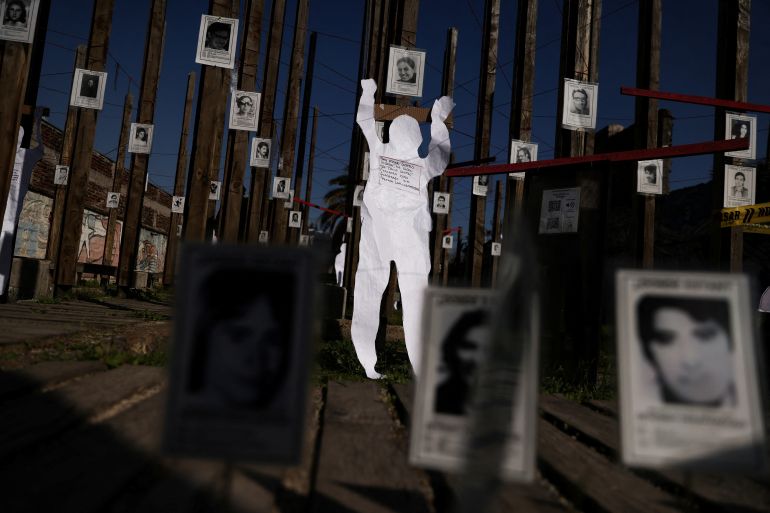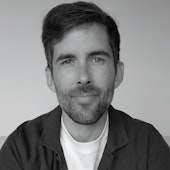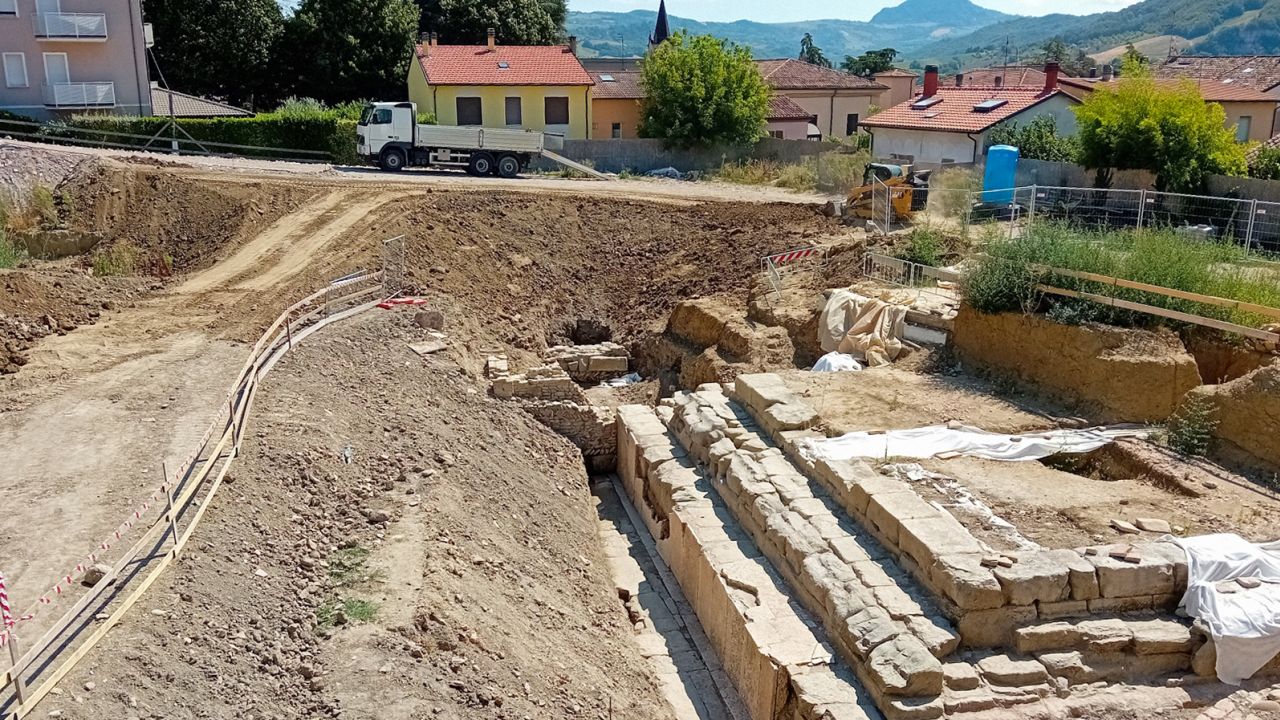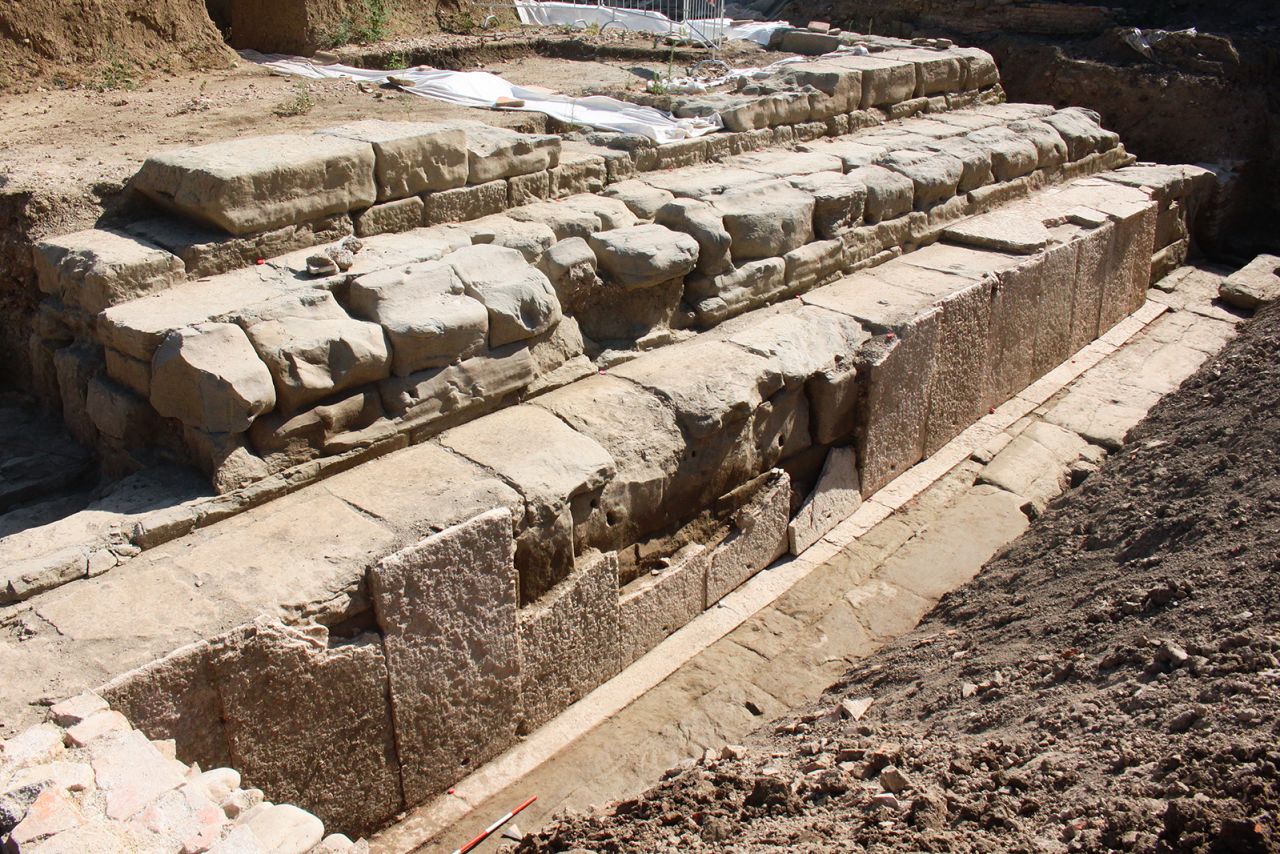Hun Sen’s legacy: Cambodia as the family business
2023.08.21
 Cambodia's Prime Minister Hun Sen waves during a festival in Phnom Penh, Nov. 21, 2018.
Cambodia's Prime Minister Hun Sen waves during a festival in Phnom Penh, Nov. 21, 2018.After nearly four decades in office, Hun Sen this week steps down as Cambodia’s prime minister. The National Assembly sat for the first time Monday, one day before the new premier is set to be sworn in. On Aug. 22, he will hand power over to his eldest son, Hun Manet, who was just 8 years old when his father took charge of a communist regime embroiled in a civil war and held afloat, barely, by foreign aid.
The 71-year-old strongman prime minister is bequeathing his son a country that has changed considerably over the course of his reign. Cambodia is on track, by World Bank estimates, to reach upper-middle income status by 2030, but inequality is rampant and poverty remains widespread.
The government Hun Manet, 45, inherits is one where it pays to have powerful parents. His incoming defense minister, Tea Seiha, is the son of his father’s long-serving defense minister, Tea Banh, who was appointed in 1989. His new interior minister, Sar Sokha, too, is taking over from his own father, Sar Kheng, who has held the top security position for 31 years.
It’s a generational change of government taken to its most literal extreme. The new minister of commerce, Cham Nimol, is the daughter of Cham Prasidh, who ran the ministry from 1994 to 2013. The minister in charge of the civil service, meanwhile, is Hun Manet’s younger brother, Hun Many. Control of Cambodia’s central bank is passing from Chea Chanto, in charge since 1998, to his daughter, Chea Serey.
In fact, almost a quarter of the 125 ruling party candidates who ran in the July 2023 national election are related, according to a recent analysis by the Cambodian Journalists Alliance Association.
The newest government reflects the Cambodia that Hun Sen has built through decades of political violence and institutional control. It is one where absolute poverty has fallen, but where an idealistic system of electoral government created by the United Nations in the 1990s has been transformed into a constellation of family fiefdoms, glued together only by a knack for corruption.
“It is a ‘clanic’ succession; it is a whole clan renewing itself,” Sam Rainsy, Cambodia’s longtime opposition leader, told Radio Free Asia this month. “The regime has become a hereditary dictatorship.”

Young reformist
A low-level Khmer Rouge military commander who turned on Pol Pot’s regime two years before its 1979 fall, Hun Sen rapidly rose to power in Cambodia’s Hanoi-backed revolutionary regime.
In 1985, at the age of 33, he became the world’s youngest head of government and set about negotiating an end to the civil war with then-Prince Norodom Sihanouk, the father of Cambodia’s independence.
Viewed as a reformist at the time, Hun Sen bucked the older conservative wing of the regime to reach an agreement with Sihanouk’s shadow government that resulted in the 1991 Paris Peace Agreement and the U.N.-run elections.
The globally funded nation-building exercise, estimated to have cost in the end more than $20 billion, was meant to instill in Cambodia a vibrant multi-party democratic system, complete with an independent media and a professional civil service.
Instead, a series of power grabs by Hun Sen – particularly a coup d’etat in July 1997 and the crackdown that followed the rise of Cambodia’s united opposition in 2013 – mean those who openly oppose his rule could at best hope for prison or exile overseas.

After the 1997 coup, U.N. investigators found evidence that at least 40 of Hun Sen’s political rivals had been executed. In ousting his co-prime minister, Prince Norodom Ranariddh, he effectively overturned the results of the 1993 U.N.-run elections that the latter had won.
It would not be until the 2013 election that a viable challenge to his rule would re-emerge, when two long-bickering opposition parties merged into the Cambodia National Rescue Party and almost came to power in an election they said they only lost due to voter fraud.
Months of demonstrations calling for a new vote followed. When the protests later dovetailed with a nationwide strike of garment workers calling for an increase in their $80 minimum monthly wage, the government responded with violence. Military police shot dead at least five of the workers, injuring and jailing dozens more.
Hun Sen was once a hope for change but has become “the one who destroyed the political system in Cambodia,” said But Buntenh, a monk who helped lead protests after the disputed 2013 election before fleeing in 2017 amid a crackdown on regime critics.
“I recognize that he contributed to the rebuilding of Cambodia after the genocide, even though that had included him as a commander of the genocide,” But Buntenh, who now lives in Massachussets, told RFA. Hun Sen also was instrumental in the development of the Paris Peace Agreement.
“That I accept and I appreciate,” he said. “But the people hate him because he took full control and ruled the country with his entire family, and takes Cambodia, as a nation, to belong to his family.”

Succession, ‘HBO-style’
Maintaining power has required more than just the violent vanquishment of foes. Hun Sen has also had to keep his own party behind him, even when not everybody has seemed on board.
In the end, Hun Sen’s own succession plan required him to cut similar handover deals with Interior Minister Sar Kheng and Defense Minister Tea Banh.
Such an across-the-board generational transfer is necessary, explained Sam Rainsy, given the “dangerous and sensitive situation” of Hun Sen standing down while two powerful ministers with large security forces behind them could still loom over his son.
“Politically speaking, and psychologically speaking, those older officials cannot work under Hun Manet, so they all have to go,” Sam Rainsy said. “And Hun Sen has to find compensation for his colleagues, so he promised they will be replaced by their sons as well.”

But it also speaks to the fragmented nature of the government Hun Manet is taking over, one in which he lacks even the power to select his own most important cabinet ministers.
“It all resembles a kind of dynastic, corporate handoff,” Sophal Ear, a Cambodia expert at Arizona State University, told RFA. “It’s ‘Succession’ HBO-style, except within a government.”
The state is me
Though he’s standing down as prime minister, Hun Sen will hold plenty of prime positions, including Senate president, a role that will make him the acting head of state when King Norodom Sihamoni is out of the country.
“I’m not going anywhere,” Hun Sen noted in an Aug. 3 speech, in which he also warned he could return as prime minister if Hun Manet is endangered. “I’m just not going to be prime minister anymore – but I will still have power, as the president of the ruling party.”
The role of CPP president may have newfound prominence in Cambodia.
As the government-aligned Khmer Times noted in its report on his speech, Hun Sen pledged to respect the independence of the new government but noted their decisions “must not be different from the policy of the party that has made a promise to the electorate.”
In some ways, it’s a reversion to Hun Sen’s roots, as a young revolutionary trained by political minders from Vietnam, where the Communist Party secretary-general runs the show, and the prime minister, as head of government, implements party edicts.

Stability, but for how long
At the very least, Hun Sen will be able to say he left behind a system of government that has lasted, said Carl Thayer, an emeritus professor at the Australian Defense Force Academy in Canberra and an election observer during the 1993 U.N.-run elections.
“Hun Sen will bequeath to Cambodia the longest-serving and most stable regime since Cambodia attained independence in November 1953,” Thayer said, even if the outgoing premier “also will go down in history as the destroyer of multiparty democracy in Cambodia.”
Hun Manet’s government, he added, will have a chance to “overcome baggage from the past” and forge new policy paths, as it searches for legitimacy.

One of the weaknesses of a personalist authoritarian regime is its reliance, at the end of the day, on its central persona.
Rainsy, the opposition leader, said that while the passing of ministerial fiefdoms from parent to child across the regime this week was meant to shore-up Manet’s position, there are no long-term guarantees.
“As long as Hun Sen is in good health, as long as he can show authority and threaten everybody, then this can last,” he said. “But the very day Hun Sen shows a sign of weakness, the day that his health deteriorates to the point that his authority is not as it is now, Hun Manet will not be able to hold onto his position.”
The making of Hun Manet
2023.08.07
 Hun Manet and his wife, Pich Chanmony, gesture during a campaign rally in Phnom Penh on July 21, 2023.
Hun Manet and his wife, Pich Chanmony, gesture during a campaign rally in Phnom Penh on July 21, 2023.Cambodia’s prime minister, Hun Sen, who is stepping down later this month after four decades in power, has often suggested he is the reincarnation of a 16th century king.
And he occasionally imbues his successor, Hun Manet, with similarly mythical powers. In public speeches and to his biographers, Hun Sen has insisted that blinding light shot out from a centuries-old Banyan tree upon his eldest son’s birth.
“Five hundred people saw the light. That was when Manet was born,” he told the authors of Strongman: The Extraordinary Life of Hun Sen in December 1997.
The anecdote, with its mythic overtones, seems calculated to portray Hun Manet as destined for the same kingly greatness as his father. But, speaking just four months after he ousted his coalition partners in a bloody coup, Hun Sen went on to tell the biographers that not only did he not want his son to walk the same political tightrope as he had, he did not think then-20-year-old Hun Manet would be well suited to it.
“I would like to be the last member of my family who was involved in politics,” Hun Sen is quoted as saying in Strongman. “I would rather see [Manet] working as an assistant to a politician, helping in national reconstruction, and not become a politician himself. … It seems he is interested in study, in research, in making recommendations rather than doing things himself.”
Hun Manet was appointed prime minister by royal decree on Monday and is poised to be sworn in on Aug. 22, following last month’s one-sided election. With the 45-year-old now taking the helm, many Cambodians are wondering what the rare moment of change will mean for the country. He is a trained economist and an experienced general. But as a politician he remains a cipher; and only time will tell whether he has his father’s autocratic tendencies.

‘An innocent guy’
Those who knew Hun Manet as a young man offer accounts not dissimilar to Hun Sen's. They recall a humble and conscientious youth, mild-mannered almost to the point of timidity and determined to carve out a career for himself in development economics.
Hun Manet enrolled at West Point military academy in 1995, the first Cambodian ever to have done so, and one of fewer than 10 non-U.S. students in a class of more than 900. He struggled initially with communicating in English and was bewildered by cultural phenomena such as hazing, he told his father’s biographers in 2003.
Kevin James, who roomed with Hun Manet for two years, described him as a “tolerant individual who, at the time anyway, didn’t have any presumptions about any one person being different from any other.”
They got on so well their first year that they elected to bunk together again in their second, James told RFA.
“I had zero complaints about living with Manet. He was friendly, and a kind and considerate roommate. He didn’t cause any issues, and he tolerated my smoking in the room,” recalled James, who is now a lieutenant colonel in the 101st Airborne Division. “He was an innocent guy with no airs, and this is coming from a guy from rural Pennsylvania – I was occasionally shocked at how innocent he was.”
Having gained a bachelor’s degree in economics, Hun Manet continued his studies at New York University. There, he researched whether Cambodia would benefit from land reform for his 2001 master’s thesis. Back home, meanwhile, his father was beginning to parcel out the country to cronies and foreign investors in the form of economic land concessions. By 2014, according to a lawsuit, such ELCs had displaced 6% of the Cambodian population.
As his father’s government continued to enrich its powerful tycoon class at the expense of the poorest, Hun Manet appeared increasingly interested in learning how the world’s worst off can be lifted out of poverty. He took an internship with the World Bank, during which time he was posted to the Congo, according to a Facebook post by Hun Sen. Afterwards, he moved to the United Kingdom, where he undertook a doctorate at Bristol University.
“He was an able student, always polite and respectful, and hard-working,” his Ph.D. supervisor, Jonathan Temple, told RFA last year, adding that he expressed a desire to work in development economics. “I did not learn about his family background until his studies were well advanced.”

Family values
If his studies brought Hun Manet geographically and perhaps intellectually far from his family, there was little sign that he left their orbit.
In his second year at N.Y.U., Hun Manet and his then-teenage siblings spent $550,000 on a four-bedroom house in New York’s Long Island suburb, despite the fact that all were unemployed and their father’s official salary was just $12,000 a year. (In the year 2000 when the purchase took place, the house equaled 1,600 times the average annual Cambodian salary.)
In 2006 Hun Manet married Pich Chanmony, the well-connected daughter of a Labor Ministry secretary of state and minister attached to the prime minister. They would go on to have three children. As with his four siblings, whose spouses are the scions of powerful families, Hun Manet’s marriage reflected a growing dynasty intertwining business, politics and personal life.
In November 2011, Pich Chanmony and the son of tycoon Choeung Sopheap (whose husband is ruling-party senator Lau Ming Kan) incorporated Phnom Penh Toll Way Co. Ltd. Soon after, the company won the $10.5 million contract to renovate and then collect tolls on Veng Sreng Boulevard.
A month after toll collection started in November 2015, Hun Sen had announced that the government would buy the company out. Today, Pich Chanmony chairs four companies and is on the board of another six, according to the Commerce Ministry registry.

The battle for Preah Vihear
Any ivory tower dreams Hun Manet might have harbored dissipated shortly after he left Bristol in February 2008. A long-running border dispute with Thailand over the Preah Vihear temple complex boiled over into live fighting in June of the same year.
The clashes were well timed for Hun Sen, who used them to drum up nationalistic support ahead of the July elections. He also took the opportunity to put his son’s West Point education to the test, placing him in charge of Cambodian forces around the temples, and sending him back when tensions flared again in 2011.
The world took notice. Robert Willard, the U.S. Navy admiral in charge of American forces in the Pacific at the time, told a U.S. congressional committee that by sending Hun Manet to Preah Vihear, Hun Sen appeared to be grooming him as his “heir apparent.”
“This conflict builds Hun Manet’s credentials as a military leader and hero who defended national sovereignty against an external threat,” Willard told the committee.
The boy who would be ‘king’
In the following years, Hun Sen’s sons and sons-in-law took on greater roles in the government and military while his daughters became business magnates, but it was increasingly clear that Hun Manet was indeed being positioned for the top job.
By 2015, the topic was the focus of a rare interview with the Australian Broadcasting Corporation, with signs that the young then-lieutenant general was growing more excited by the prospect.
After spending most of the conversation quietly trotting out the Cambodian People’s Party line about the dangers of upending the status quo, Hun Manet's mask slipped toward the end. The interviewer first asked him how long his father planned to stick around. A smile broke across his face, and laughing, he chided the interviewer: “Cambodia is a democracy; as long as the people want him to.”
His smile grew larger when she asked, “If the people want you to, you would be prime minister?”
“Not no, not yes,” he said.

As speculation around Hun Manet’s future role mounted, he received promotion after promotion, moving rapidly up the military ranks. He spoke rarely with reporters and closely guarded his public image. While other members of his family today have a robust social media presence, showing off expensive watches and private jets, Hun Manet maintains only professional accounts and keeps his children mostly hidden from view. (Requests to Hun Manet for an interview went unanswered.)
At times, he has shown little tolerance of criticism. In 2016, he complained to the press that he had been met with protests by the Cambodian diaspora wherever he went in Australia.
“Why are they looking down on me, causing divisions and conflicts?” he asked reporters.
Ou Virak, president of the Phnom Penh think tank Future Forum, said past conversations with Hun Manet left him with the impression that the future premier was sincerely interested in tackling corruption and encouraging development. But along with the premiership, Hun Sen has also bequeathed his son a country whose power structures were forged in violent struggle and are precariously interlocked. Given such an entrenched political system, anything that upsets them could be disastrous for Hun Manet personally.
“At his stage, politics is still a zero-sum game to him, it could be dangerous for his family [to accept change],” he noted.
Additional reporting by RFA Khmer's Keo Sovannarith. Edited by Abby Seiff












